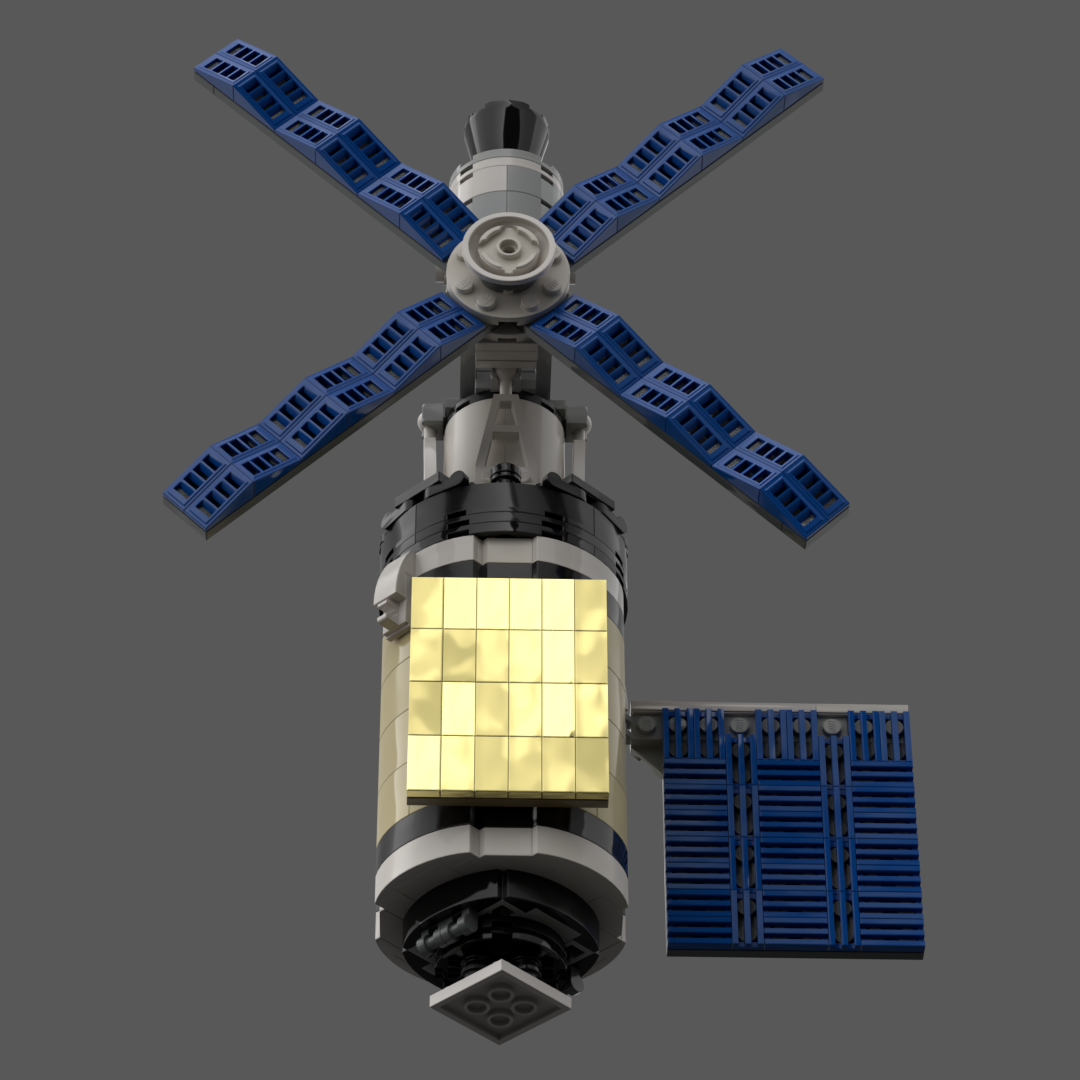
LEGO Designer:
Grant Passmore (Eiffelman)
Designed:
July 2017
Categories:
Space Stations, All, Space Agency - NASA
Launch Vehicle Details
Stages:
Length:
Diameter:
Mass at Launch:
Low Earth Orbit Capacity:
Total Thrust:
Apogee:
Class:
Skylab included a workshop, a solar observatory, and several hundred life science and physical science experiments, and was launched uncrewed into low Earth orbit by a modified Saturn V rocket, with a weight of 170,000 pounds (77,000 kg). This was the final mission for the Saturn V rocket, more commonly known for carrying the crewed Moon landing missions.Three subsequent missions delivered three-astronaut crews in the Apollo command and service module (Apollo CSM) launched by the smaller Saturn IB rocket. For the final two crewed missions to Skylab, NASA assembled a backup Apollo CSM/Saturn IB in case an in-orbit rescue mission was needed, but this vehicle was never flown. The station was damaged during launch when the micrometeoroid shield tore away from the workshop, taking one of the main solar panel arrays with it and jamming the other main array. This deprived Skylab of most of its electrical power and also removed protection from intense solar heating, threatening to make it unusable. The first crew deployed a replacement heat shade and freed the jammed solar panels to save Skylab. This was the first time that a repair of this magnitude was performed in space.
Skylab included the Apollo Telescope Mount (a multi-spectral solar observatory), a multiple docking adapter with two docking ports, an airlock module with extravehicular activity (EVA) hatches, and the orbital workshop, the main habitable space inside Skylab. Electrical power came from solar arrays and fuel cells in the docked Apollo CSM. The rear of the station included a large waste tank, propellant tanks for maneuvering jets, and a heat radiator. Astronauts conducted numerous experiments aboard Skylab during its operational life. The telescope significantly advanced solar science, and observation of the Sun was unprecedented. Astronauts took thousands of photographs of Earth, and the Earth Resources Experiment Package (EREP) viewed Earth with sensors that recorded data in the visible, infrared, and microwave spectral regions. The record for human time spent in orbit was extended beyond the 23 days set by the Soyuz 11 crew aboard Salyut 1 to 84 days by the Skylab 4 crew.
Later plans to reuse Skylab were stymied by delays in development of the Space Shuttle, and Skylab’s decaying orbit could not be stopped. Skylab’s atmospheric reentry began on July 11, 1979, amid worldwide media attention. Before re-entry, NASA ground controllers tried to adjust Skylab’s orbit to minimize the risk of debris landing in populated areas, targeting the south Indian Ocean, which was partially successful. Debris showered Western Australia, and recovered pieces indicated that the station had disintegrated lower than expected.As the Skylab program drew to a close, NASA’s focus had shifted to the development of the Space Shuttle. NASA space station and laboratory projects included Spacelab, Shuttle-Mir, and Space Station Freedom, which was merged into the International Space Station.
Downloads
Model contains:
- Skylab in deployed state
- Skylab in folded position inside of aerodynamic shield and upper stage to be fitted on top of Saturn V.
Deployed state:
Part count: 420 bricks, 103 lots.
| Unit | width | length | height |
|---|---|---|---|
| Studs | 23.8 | 13.3 | 34.4 |
| Inches | 7.5 | 4.2 | 10.8 |
| Centimetres | 19 | 10.6 | 27.5 |
No external URL provided.
Launch History information from space.skyrocket.de
Launch History information from space.skyrocket.de